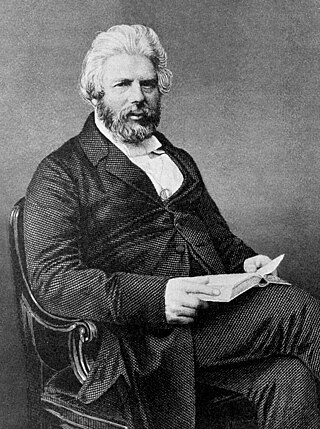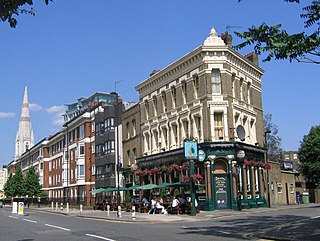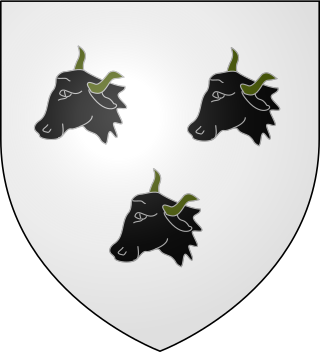The Book of Days (1864)
The Book of Days was Robert Chambers's last publication, and perhaps his most elaborate. It is a huge collection of short, largely factual pieces that today might be bracketed as "trivia", but very interesting trivia. The formula has been much repeated. It is supposed that his excessive labour in connection with this book hastened his death. [3]
The book was published in two large volumes, each over 840 pages long, and, for its day, was well-illustrated with engraved drawings linked to the articles. Its full title is The Book of Days: A Miscellany of Popular Antiquities in Connection with the Calendar: Including Anecdote, Biography, & History, Curiosities and Literature, and Oddities of Human Life and Character. It is well-indexed, adding much to its value as a reference tool.
Each day, listed in chronological order, gives a short list of saints connected to the day and famous persons born on that day or dying on that day. Individuals are then selected from these lists for more detailed articles. With six or seven articles each day, the total number of articles, which are in the form of erudite essays, runs to around 2,000. The book has frequently been quoted in other reference books.
Chambers carried out his research for the book in 1860 and 1861, primarily in the British Museum in London. He then spent 1863 and 1863 organising the assembled essays into chronological order and editing the work. The task is said to have mentally ruined him. [4]

Robert Chambers was a Scottish publisher, geologist, evolutionary thinker, author and journal editor who, like his elder brother and business partner William Chambers, was highly influential in mid-19th-century scientific and political circles.

John Nichols was an English printer, author and antiquary. He is remembered as an influential editor of the Gentleman's Magazine for nearly 40 years; author of a monumental county history of Leicestershire; author of two compendia of biographical material relating to his literary contemporaries; and as one of the agents behind the first complete publication of Domesday Book in 1783.

St Winefride'sWell is a well located in the town of Holywell, Flintshire, in Wales. It claims to be the oldest continually visited pilgrimage site in Great Britain and is a grade I listed building and scheduled ancient monument. St Winefride's well is believed to be connected to St Mary's well and chapel in Cefn Meiriadog, Denbighshire. It is one of the few locations mentioned by name in the anonymous medieval alliterative poem Sir Gawain and the Green Knight.
Lord William Howard was an English nobleman and antiquary, sometimes known as "Belted or Bauld (bold) Will".

White Conduit Fields in Islington was an early venue for cricket and several major matches are known to have been played there in the 18th century. It was the original home of the White Conduit Club, forerunner of Marylebone Cricket Club (MCC). Later it was used by The Islington Albion Cricket Club, who played their last game at the ground in 1834. Maps from the time show that the cricket field was a few hundred metres north of the White Conduit House, in the land surrounding the modern Richmond Crescent, and paintings suggest it was also possibly on the adjacent field to the south at the modern Barnard Park.

The White Conduit Club (WCC) was a cricket club based on the northern fringes of London that existed from about 1782 until 1788. Although short-lived, it had considerable significance in the history of the game, as its members created the first Lord's venue and reorganised themselves as the new Marylebone Cricket Club (MCC).

Hercules Road runs north from Lambeth Road near Lambeth Palace, on the site of Penlington Place, in the London Borough of Lambeth, south London, England.

Clan Turnbull is an armigerous Scottish clan.
Richard Whittington-Egan was a British writer and criminologist, the author of Liverpool Colonnade and Liverpool Roundabout, two colourful chronicles of Liverpool's historical characters, crimes and mysteries. A leading author on true crime over a long period of time, he is acknowledged also as an expert on Jack the Ripper.
Nationality words link to articles with information on the nation's poetry or literature.
Harrap's Shorter French Dictionary, published by Chambers Harrap Publishers, is one of the best known English/French bilingual dictionaries in the United Kingdom and France. The eighth edition was published in April 2007. In the United States it is sold under the title Harrap's French and English College Dictionary.
Chambers is a reference publisher formerly based in Edinburgh, Scotland, which held the property rights of W. & R. Chambers Publishers.
John Day is the first recorded death in an accident with a submarine. Day was an English carpenter and wheelwright. With the financial support of Christopher Blake, an English gambler, Day built a wooden "diving chamber" without an engine. He attached his invention to the deck of a 50-ton sloop named the Maria, which Blake had purchased for £340. The sloop's hold contained 10 tons of ballast, and two 10-ton weights were attached beneath the keel which could be released from inside the diving chamber. An additional 20 tons of ballast would be loaded on the Maria after Day had been locked inside the diving chamber.

The Curse of Scotland is a nickname used for the nine of diamonds playing card. The expression has been used at least since the early 18th century, and many putative explanations have been given for the origin of this nickname for the card.

William Paget was an English actor and author in the 18th century who played alongside David Garrick and was a member of John Rich's company, playing in the first season of Theatre Royal, Covent Garden (1732). He was also an "eminent" Tobacconist on Fleet Street, London. Toward the end of his life he served time in Fleet Prison, writing the poem The Humours of the Fleet among others. He then agreed to participate in the establishment of Halifax, Nova Scotia, dying there in 1752.
Sir John Bonham was a mercer of the City of London, revered as one of the Nine Worthies of London by Richard Johnson in his 1592 biography of eminent citizens.
Sir Christopher Croker was a vintner of the City of London, revered as one of the Nine Worthies of London by Richard Johnson in his 1592 biography of eminent citizens.
Saint Gildas the Albanian also known as Gildas the Scot, is a spurious early British saint. Apparently identical with Saint Gildas, he was invented in the 17th century to explain away inconsistencies in mediaeval sources.
This page is based on this
Wikipedia article Text is available under the
CC BY-SA 4.0 license; additional terms may apply.
Images, videos and audio are available under their respective licenses.








